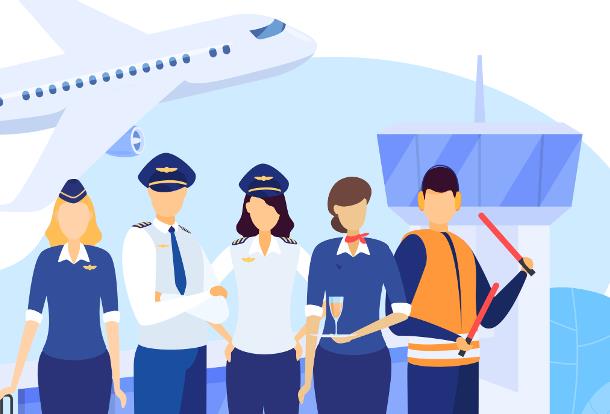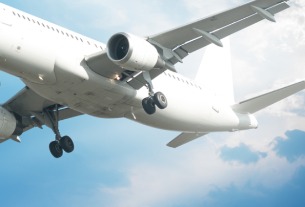Air travelers filling planes in the U.S. at a record pace are missing out on the fuel savings that motorists are finding at the pump.
Even as jet keroseneheads for its first annual decline since 2008, airlines are relying on strong ticket demand to hold the line on prices. U.S. carriers have no incentive to start offering fares for less -- and they say they won’t.
“Just like gasoline prices drop for the consumer, why not airline prices?” said Hank Levenson, who was flying this month to Orlando,Florida, from Dallas for his law-enforcement training business. “Coming from the same refinery, the same source, why not pass it on to the consumer? That’s what good customer service is all about.”
Crude oil’s worldwide slide in 2014 has cut jet fuel by 22 percent, a boost for U.S. carriers because it’s their largest cost. At the same time, one-way domestic coach flights averaged $466 this year through September, 1.7 percent more than for all of 2013, according to data compiled by Bloomberg Intelligence.
“You were willing to pay that price yesterday, so what’s different?” said Bob Mann, a former American Airlines executive who is now president of aviation consultant R.W. Mann & Co. in Port Washington, New York. “Airlines have the pricing power. Why are they ever going to give it up?”
Shares Surge
Spending less and charging more has been good for airline earnings -- and share prices. Excluding some one-time items, the six largest U.S. carriers posted more than $3.96 billion in third-quarter profits. The Bloomberg U.S. Airlines Index surged 44 percent this year through yesterday.
“In a strong demand environment, we don’t plan to go off and just proactively cut fares,” American Airlines Group Inc. (AAL)President Scott Kirby said on an Oct. 23 conference call.
The industry finds itself in a sweet spot not seen in years. Jet kerosene last fell on an annual basis when the global financial crisis eroded leisure and business flying so much that U.S. airlines shrank operations by the most since World War II. Now, carriers are pocketing savings from less-expensive fuel while still holding the line on fares.
Fuel was the largest single operating expense for American, United Continental Holdings Inc., Delta Air Lines Inc. and Southwest Airlines Co. (LUV), the four biggest U.S. carriers, during the first nine months of 2014. It accounts for about a third of all spending at each of the companies.
“For the whole industry, it’s roughly a 10 percent increase in profit for every 10-cent drop in jet fuel” on a per-gallon basis, said Michael Derchin, an analyst at Stamford, Connecticut-based CRT Capital Group.
Jet Fuel
Jet fuel for immediate delivery in New York Harbor has been retreating since a 2014 high of $3.20 a gallon on Feb. 20. Refined from crude, it’s been tumbling along with oil prices amid surging U.S. supplies and production increases by the Organization of Petroleum Exporting Countries. The price was at $2.46 a gallon yesterday, according to data compiled by Bloomberg.
Because drivers see their gasoline bills when they fill up, the 8.7 percent drop in 2014 retail prices tracked by motoring club AAA through Oct. 27 is more apparent than the decline in jet fuel, which is only one of many costs for airlines.
It’s “a bit intellectually dishonest” to suggest that fares should fall along with fuel bills, said Andrew Davis, an analyst at Baltimore-based T. Rowe Price Group Inc., which has $5.5 billion in airline shares including stock in American, United and Delta. Fuel prices are volatile, and airlines should charge based on ticket supply and demand, Davis said.
Full Planes
Airlines in the U.S. filled more than 83 percent of their seats this year through July, the latest figures available, according to the U.S. Transportation Department’s Bureau of Transportation Statistics. That’s running ahead of 2013’s average.
A one-way domestic coach trip averaged $455.20 last month, up 1.6 percent from August, according to data compiled by Bloomberg Intelligence from Airlines Reporting Corp., which provides financial settlement services between airlines and travel marketers. A one-way premium fare averaged $924.40, the highest since April.
Delta led the industry in raising fares across its domestic network by as much as $10 round trip on Oct. 16-17, the fifth successful attempt out of 20 tries this year, according to online price tracker FareCompare.com. Carriers pushed through three broad increases on 12 tries in 2013.
Airlines also aren’t abandoning fuel surcharges, said FareCompare Chief Executive Officer Rick Seaney. Those fees were initially added on flights starting around 2008 to help cover rising fuel costs and later became restricted to international flights only. They will add as much as $450 on a round-trip ticket to Europe this winter, Seaney said.
“If it truly is a fuel surcharge, and not just a price increase, then let’s drop it,” Seaney said.
Inflation Bargain
American has a “miscellaneous fees” category of a similar amount that’s added to tickets to Europe and Asia, said Joshua Freed, a spokesman for the Fort Worth, Texas-based carrier.
Executives such as American’s Kirby say airfares remain a bargain when correcting for inflation. On that basis, the average round-trip domestic ticket cost almost 15 percent less in the second quarter than in the same period in 1995, according to the Bureau of Transportation Statistics.
Lessons Learned
Airlines’ pricing power is also the result of lessons learned the hard way about curbing available seats so carriers can charge more. That discipline has helped the U.S. industry produce four annual profits after bankruptcies, consolidation and nine years of losses that totaled $58 billion through 2009.
“Yes, they are making good money,” said Jay Sorensen, a former marketing director at Midwest Airlines who is now president of aviation consultant IdeaWorksCompany in Shorewood, Wisconsin. “They have a lot to make up. Most of these companies have been in bankruptcy. They have been running on fumes for the last 20 years.”
For Vladimir Pando, 35, ticket prices still seem too high, and sting consumers laden with extra fees, such as paying for checked bags, that didn’t exist a decade ago. Pando works for Time Warner Cable Inc. and flies about eight times a year.
“Now that they don’t have to buy at such a high price, they should drop,” Pando said while waiting at Dallas-Fort Worth International Airport for a trip to visit friends in Orlando. “There’s not much we can do about it. I don’t want to drive 20 hours to Florida.”
Read original article




